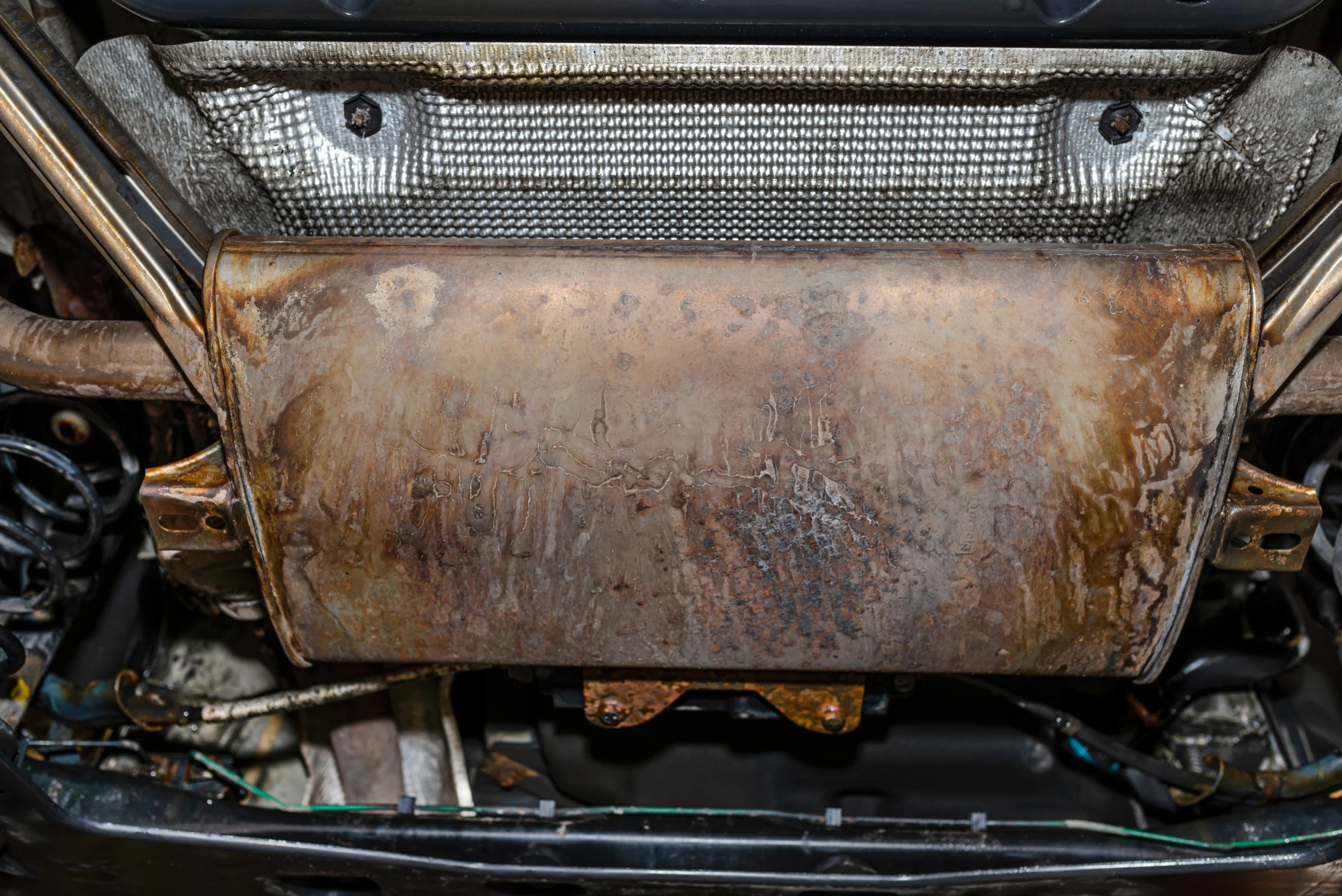Why Documentation Transforms Converter Transactions
Converter sales involve multiple handoffs across different parties, and weak chain of custody practices create unnecessary disputes, delays, and financial risks. Strong documentation protects both sellers and buyers by proving parts maintain lawful origins, accurate grading, and proper handling throughout the process. Professional paperwork also strengthens buyer confidence, which typically supports higher catalytic converter prices through reduced uncertainty.
Broader public interests also benefit from robust traceability systems. Theft and gray-market activity flourish where documentation remains weak or incomplete. Law enforcement agencies worldwide report surging converter theft rates tied to illicit trading networks, highlighting how legitimate operators need traceable sourcing systems to maintain credibility. INTERPOL has documented the global rise in catalytic converter thefts, emphasizing how proper documentation helps distinguish lawful commerce from criminal activity. Understanding the black market dynamics for stolen catalytic converters helps legitimate operators recognize why comprehensive documentation becomes essential for protecting their business reputation.
Essential Document Package for Every Transaction
Smart sellers create standardized packages for each lot, keeping processes simple, repeatable, and comprehensive. These documents form the foundation that most buyers and logistics partners expect:
Seller verification materials – Valid trade licenses or business registrations, plus representative identification documents.
Detailed invoices – Precise unit counts, grade classifications, weights, and any relevant serial or lot identification numbers.
Ownership confirmation – Clear statements confirming lawful ownership rights and authorization to sell the materials.
Custody transfer logs – Detailed records showing dates, locations, and responsible parties at every handoff point.
Visual documentation – High-quality images of converters during receiving, tagging, and final packaging stages.
Shipping manifests – Complete box or pallet counts, gross and net weights, plus tamper-evident seal numbers.
Transportation records – Waybills, air/sea transport documents, or courier receipts linked to specific lot identifiers.
Regulatory permits – Export/import authorizations when required, with copies matching invoice specifications exactly.
Environmental certificates – Recycling or disposal certifications if buyers or regional regulations demand them.
The OECD’s Due Diligence Guidance for Responsible Supply Chains emphasizes that traceability and comprehensive documentation represent core risk management practices across industrial supply chains. Leading industries apply similar principles to ensure responsible sourcing and maintain trade compliance through auditable records and systematic supplier verification processes.
Digital Record Systems That Actually Function
Paper documents fade and screenshots disappear at critical moments. Building a straightforward digital foundation helps teams move quickly while passing audits without stress or confusion.
Consider implementing this proven approach:
Unique lot identification – Assign distinct lot IDs to every batch and include them in all document names and photo files.
Structured folder hierarchy – Mirror the physical journey: 01-Sourcing, 02-Receiving, 03-Processing, 04-Shipping, 05-Archive.
Same-day digitization – Scan handwritten documents immediately and save them in appropriate folders with lot IDs as prefixes.
Timestamped photography – Store images and videos with enabled timestamps; include paper slips showing lot IDs in every photo.
Protected final documents – Convert invoices and permits to read-only PDFs preventing accidental modifications.
Redundant backup systems – Archive your complete repository nightly to both cloud storage and external solid-state drives.
Access control management – Limit write permissions while ensuring team members maintain appropriate read access levels.
Advanced users can implement lightweight ledger features including immutable audit logs, version histories through cloud storage, and file checksums for critical documents. These additional steps strengthen trade compliance frameworks and create compelling chain of custody evidence during buyer evaluations.
How Strong Documentation Drives Better Pricing
Buyers consistently pay premiums for certainty and reduced risk exposure. When sellers deliver clear traceability, consistent grading standards, and verified lawful sourcing, they reduce buyer risk profiles significantly. Lower perceived risks frequently translate into stronger bid prices, ultimately improving realized catalytic converter prices.
Four specific ways documentation pushes pricing upward:
Grade verification evidence – Pre-shipment assays or standardized photographic documentation reduce post-delivery disputes and protect net returns.
Loss prevention measures – Sealed pallets with recorded tamper-evident numbers prevent inventory shortages during transport.
Processing speed improvements – Complete file packages enable faster compliance reviews and accelerate settlement timelines.
Reputation compounding – Consistent clean transactions with robust documentation best practices attract more competitive buyers over time.
Teams evaluating potential partners should develop systematic approaches for assessing prospective catalytic converter recycler relationships. Professional evaluation processes help frame productive vetting conversations and identify partners who respect proper documentation standards and timing requirements.
Documentation Verification Quick Reference
| Document Type | Issuing Authority | Key Verification Points | Lot ID Integration |
|---|---|---|---|
| Commercial Invoice | Seller Organization | Legal entity names, tax registrations, accurate item counts and classifications | Include lot ID in headers and file naming |
| Ownership Statement | Seller or Authorized Representative | Lawful ownership declarations, valid signatures, current dates | Reference lot ID in document body and associated photos |
| Identity Documents | Seller or Representative | Name matching invoice details, current validity periods | Save in 01-Sourcing folders with lot ID prefixes |
| Packing Manifest | Shipping Organization | Count accuracy, weight verification, pallet identifiers, seal documentation | Include lot ID references on every page |
| Transport Documentation | Carrier or Freight Company | Air/sea waybill numbers, shipping dates, consignee accuracy | Reference lot IDs in booking notes and shipping instructions |
| Permits and Certificates | Regulatory or Accredited Bodies | Validity periods, scope matching shipment details exactly | Attach directly to lot-specific folders |
UAE Market Documentation Requirements
Buyers operating in UAE markets expect clarity and consistency in their documentation packages. While specific requirements vary between companies and shipment types, the following document set typically streamlines approval processes and supports comprehensive trade compliance reviews:
Comprehensive invoices displaying total converter counts, detailed grade codes or classifications, and corresponding weight measurements.
Aligned packing lists matching invoice quantities exactly, including seal numbers applied to individual pallets.
Business verification copies including seller trade licenses or commercial registrations, plus authorized representative identification.
Letterhead attestations providing ownership confirmation statements on official company letterhead.
Visual evidence including lot photos with visible identification labels and timestamps, plus warehouse departure documentation.
Transportation booking records including air or sea waybills and declared harmonized system codes as agreed with buyers.
Environmental certifications when buyers request recycling or disposal-related documentation for their own compliance requirements.
Strong provenance documentation becomes increasingly important as regional authorities focus on distinguishing legitimate commerce from criminal activities. Comprehensive chain of custody practices reduce operational risks and protect compliant sellers from inadvertent involvement in problematic supply chains.
Maximizing Catalytic Converter Returns
Everyone seeks improved returns, but the pathway involves surprisingly practical steps. First, eliminate ambiguity completely. When buyers review crisp documentation best practices, traceable movement histories, and consistent grading methodologies, negotiations begin from stronger foundations, which directly supports catalytic converter price improvements.
Second, mirror buyer preferences and formatting requirements. When partners use specific grade classification systems, adopt identical approaches. When they prefer particular photographic angles or documentation sequences, provide exactly what they expect. Reduced back-and-forth communication equals faster bid processes.
Professional sellers often leverage specialized processing and sales support services to optimize catalytic converter recycling outcomes. Expert partners can smooth logistics challenges while maximizing material recovery rates and final returns.
Complete Workflow Implementation Guide
Here’s a streamlined, repeatable process most small teams can implement immediately:
Supplier pre-qualification – Collect trade licenses, identification documents, and completed ownership attestation templates before any transactions.
Pre-pickup lot assignment – Generate unique lot IDs before material collection and send sellers photo checklists plus labeling guidelines.
Receiving and documentation – Count, photograph, and record all items while noting discrepancies in receiving logs immediately.
Consistent grading procedures – Code materials using standardized approaches and save brief videos showing grading tables with visible lot IDs.
Invoice and manifest preparation – Create detailed invoices and packing lists while double-checking that counts and weights match receiving records exactly.
Secure pallet sealing – Apply tamper-evident seals, record all seal numbers, and photograph security measures in detail.
Transportation booking – Arrange transport services and attach lot IDs to booking references while saving all carrier documentation in appropriate folders.
Buyer communication – Share consolidated PDF binders with buyers, invite clarifying questions, and confirm any special documentation requirements.
Shipment monitoring – Track shipments actively and update shared status systems at every significant handoff point.
Settlement and archival – Complete transactions, mark lot folders as read-only, and execute backup procedures.
Professional Template Resources
Recohub offers comprehensive template packages designed for sellers and buyers seeking to streamline their documentation processes. The package includes:
Invoice and packing templates with integrated lot ID fields and automated calculation functions.
Receiving and transfer logs providing structured chain of custody documentation frameworks.
Ownership attestation forms including spaces for identification information and signature requirements.
Photography checklists and labeling guides ensuring consistent visual documentation standards.
Sample retention policies and dispute resolution forms supporting comprehensive quality management.
For deeper insights into service workflows, material grading methodologies, and sustainable processing approaches, professional catalytic converter recycler partners offer responsible handling solutions from initial intake through final recovery stages. These services support steady outcomes for sellers focused on optimizing catalytic converter price realization and operational reliability.
Industry Context and Ethical Considerations
Professional documentation practices serve broader industry interests beyond individual transactions. Comprehensive traceability standards help legitimate operators distinguish their activities from criminal enterprises that exploit weak documentation systems. When sellers invest in robust record-keeping, they contribute to industry-wide efforts that protect honest businesses and support sustainable market development.
The contrast between legitimate catalytic converter recycling operations and illicit black market networks demonstrates why comprehensive documentation becomes a competitive advantage rather than just a compliance requirement. Professional operators who maintain meticulous records can clearly differentiate their services from questionable alternatives in the marketplace.
Summary and Key Takeaways
Professional documentation represents the most direct path to faster transactions, cleaner audit outcomes, and stronger bid prices. Build straightforward digital systems, implement consistent lot identification procedures, and treat chain of custody records as valuable business assets. Over time, reputation compounds alongside financial returns, creating sustainable competitive advantages.
Sellers requiring template resources or practical process reviews can access professional support for compliant workflows and efficient catalytic converter recycling solutions. Strong documentation practices benefit individual transactions while supporting broader industry integrity and sustainable business development.
FAQ
What essential documents do I need for every catalytic converter transaction?
Create standardized packages including trade licenses, detailed invoices with unit counts and grades, ownership confirmation statements, timestamped photos with lot IDs, transportation records, and tamper-evident seal documentation. This complete package reduces buyer risk and supports higher catalytic converter prices.
How does proper documentation increase my catalytic converter selling price?
Strong documentation best practices reduce buyer uncertainty through grade verification, loss prevention, faster processing, and reputation building. Buyers consistently pay premiums for certainty, making comprehensive chain of custody records a direct path to better catalytic converter prices.
What's the best way to organize digital records for converter sales?
Implement unique lot IDs for every batch, create structured folders (Sourcing, Receiving, Processing, Shipping, Archive), scan documents same-day with lot ID prefixes, use timestamped photos, and backup nightly to multiple locations. This system accelerates trade compliance verification.
Why is traceability important in catalytic converter recycling?
Traceability distinguishes legitimate catalytic converter recycling from criminal networks. With rising theft rates documented by INTERPOL, strong chain of custody practices protect your business reputation and ensure compliance with buyer requirements and regional regulations.
What documentation do UAE buyers typically require?
UAE markets expect comprehensive invoices with grade codes, aligned packing lists with seal numbers, business verification copies, letterhead ownership attestations, visual evidence with timestamps, transportation booking records, and environmental certifications when requested. Complete packages streamline approval processes and support trade compliance.







